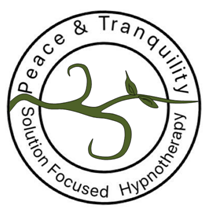About Solution Focused Hypnotherapy

Understanding hypnotherapy
What is hypnosis?
What is trance?
What is hypnotherapy?
Are there any myths around hypnotherapy?
Why do people choose hypnotherapy?
What is the process of hypnotherapy?
What is hypnosis?
Hypnosis comes from the Greek word 'hypnos' which means 'sleep'. We now know that trance and sleep are different states. Hypnosis is the process of inducing a trance. The term is sometimes used in place of 'hypnotherapy'. This is incorrect because hypnosis itself does not involve therapy (it can be used for other purposes, such as creating a trance for entertainment or relaxation).
What is trance?
Everyone has experienced everyday trances such as:
- You were so involved in chatting to someone that sense of time disappeared.
- You're enjoying a drink that you don't remember making.
- You became engrossed in a film or book.
- Daydreaming.
- You see a child's eyes glaze over as they are told a bedtime story.
- Performing repetitive tasks and 'losing yourself', such as mowing the lawn.
These are natural trance states. A hypnotherapist induces the same pleasant, relaxed state deliberately. You will become very focused and able to concentrate more on the things that will bring about solutions to your problem.
What is hypnotherapy?
Client are encouraged to enter into trance and then offered hypnotic suggestions. When someone is in a trance, they are more open to suggestions, and can therefore be encouraged to think and behave differently. However, you can't be made to do anything you don't already want to do. Suggestions are ideas, normally based on our earlier discussion, e.g., "You can enjoy feeling relaxed and put these troublesome memories behind you."
A stage hypnotist will use the client's suggestibility to entertain people. A hypnotherapist will use suggestibility to bring about positive changes in the client's life.
The mind has two parts, the conscious mind and subconscious mind. We use our conscious mind when we think. The subconscious mind is hidden beyond our awareness. In addition to its more positive aspects, it is also responsible for habits, impulses, emotions, irrational thoughts and some illnesses.
When in a trance, the client's busy conscious mind relaxes allowing their subconscious mind to come to the fore. The therapist can then speak to a more receptive and focused subconscious mind to create deep-rooted and lasting change.
'Clinical hypnotherapy' is the same as 'hypnotherapy'. The process would be the same under either term and the therapist would have the same skills.
Are there any myths around hypnotherapy?
Film, TV and comics portray the hypnotist as a 'mind-controller'. In fact, you will only do things you want to do. If you wish, you can refuse to enter a trance, bring yourself out of trance, and reject any suggestions made.
Hypnotherapists are sometimes regarded as being the same as stage hypnotists. Stage is a place for entertainment and people cooperate in that frame of reference. Uncooperative people are returned to the audience. In a therapy room we are working towards clinical goals rather than 'dancing like a chicken'!
A common myth is that hypnotherapy is a 'magic wand' or 'miracle cure'. Your own effort is likely to be required.
Another myth is that hypnotherapy is difficult to explain scientifically and therefore it doesn't work. This is rather like saying breathing oxygen didn't work until science understood it. Lots of scientific studies have shown hypnotherapy to be effective, we just don't yet quite know why.
Why do people choose hypnotherapy?
There are lots of reasons. Here are some of the common ones:
- Recommendations from people who have benefited.
- Referral from a doctor, psychologist, psychotherapist, or another hypnotherapist.
- Medicine is not working and the client wants something additional or different.
- The client wants to tackle unconscious problems.
- Other therapies have not worked.
What is the process of hypnotherapy?
The process can vary considerably because I tailor therapy to you and your needs. Everyone is different. Still, I can provide a general guide:
- Have a read around this website and decide if you might like to work with me.
- Call me, without obligation, to chat about your needs and any questions.
- If you are happy to proceed, you can book an appointment.
- Your first session is an assessment. I can make sure I am likely to be able to assist, and get an idea of how many sessions are likely. No trance is induced on this session. It's all about getting the facts together in preparation for the course of therapy.
- At the next session, with your readiness and permisison, I induce a trance.
- While in trance I provide hypnotic suggestions and sometimes as more questions. Insight into causes and solutions often emerge at this stage.
- Each session will involve some talking, e.g., about progress and any new information, and some trance work.
- Therapy is brought to an end when the client thinks the solution is in place or earlier if they prefer.
